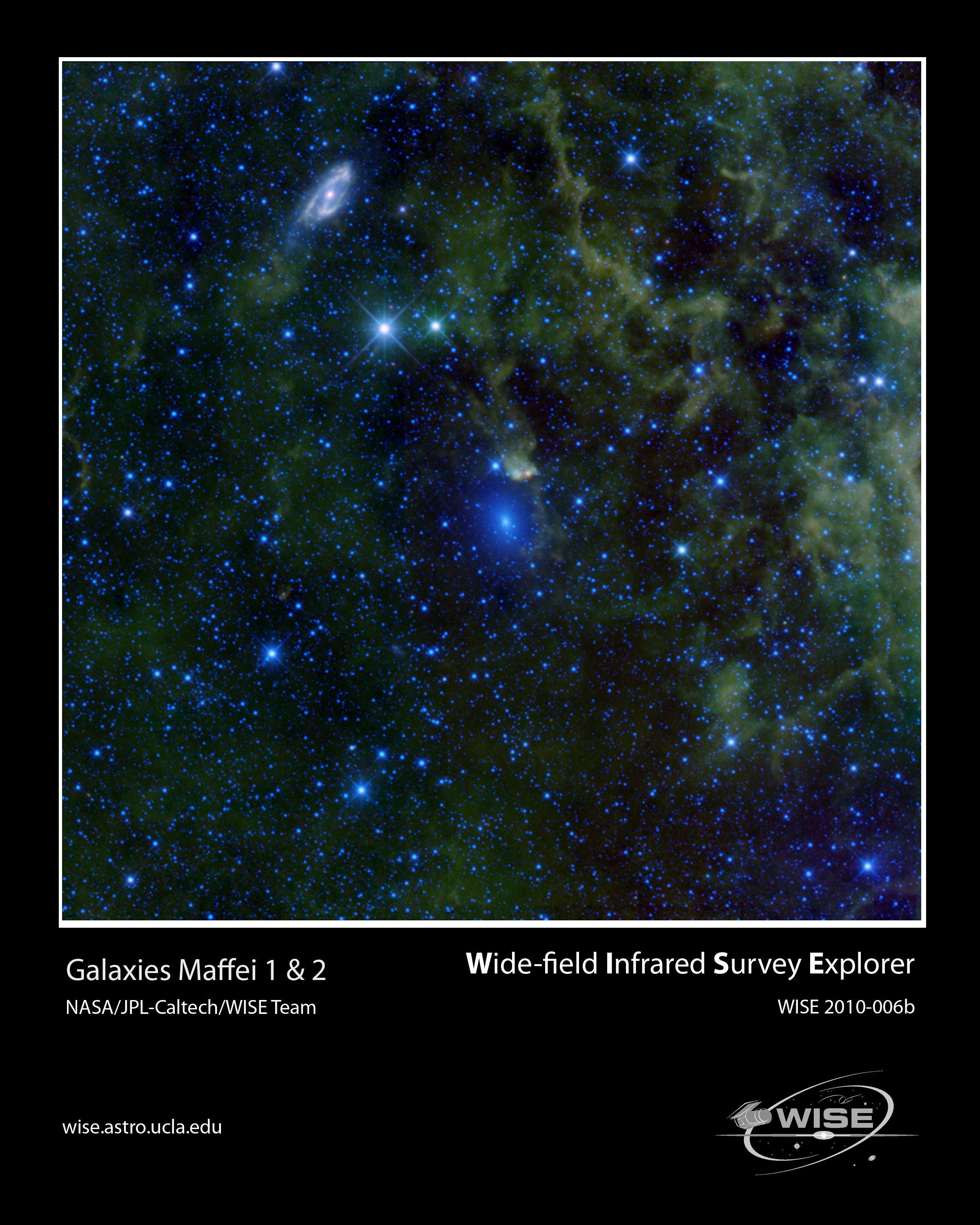
In 1967, the Italian astrophysicist Paolo Maffei, one of the pioneers of infrared astronomy, made an amazing discovery. While scanning images of IC 1805 (the Heart Nebula) in Cassiopeia, he spotted two galaxies that had never been seen before. These two galaxies had evaded detection due to their position within what is referred to as the zone of avoidance. That’s the region of the sky that is obscured visually by gas and dust along the plane of the Milky Way. Infrared wavelengths, however, can pierce those clouds.
As a result of Maffei’s breakthrough discovery, these two galaxies are now known as Maffei 1 and Maffei 2. Maffei 1 is a giant type E3 elliptical galaxy. Its stars are mostly old, around 10 billion years in age. If the view was clear, it would likely be one of the brightest galaxies in the northern sky and span about two-thirds of the Moon’s diameter. Despite Maffei 1’s size and mass, the presence of a giant black hole in its center has never been detected.
Maffei 2 is a barred spiral that features two asymmetrical spiral arms. Its prominent central bar and lopsided arms show that the galaxy is undergoing a burst of star formation in its core. This occurs when large quantities of gas and dust are forced into the center of a galaxy by gravitational interactions.
The two galaxies, along with 16 other galaxies, form the IC 342-Maffei 1 Group. All lie an average of 10 million light-years away.









